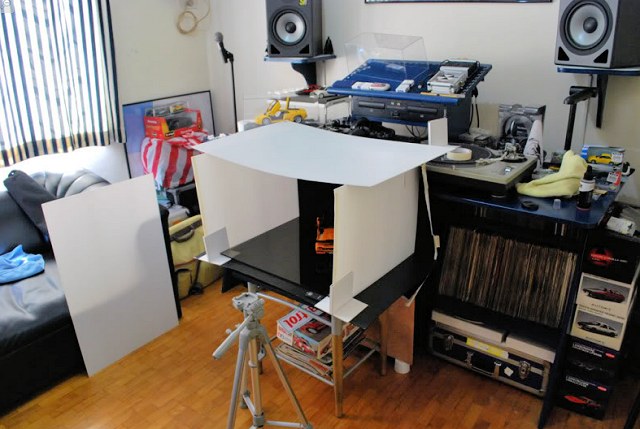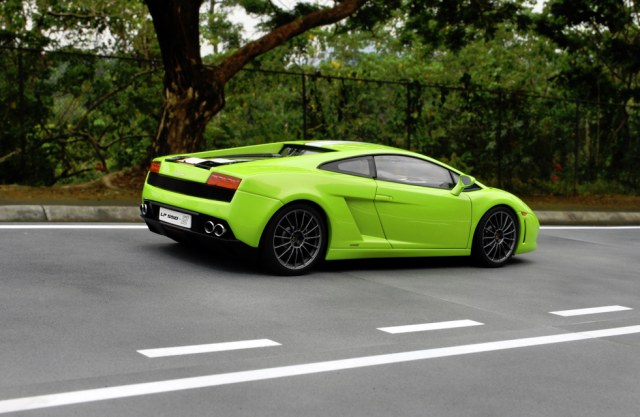| Diecast Model Photography: Tips & Tricks • DiecastSociety.com |
Diecast Model Photography: Tips & Tricks
Author/Model:
Thomas Andre de Dios
Tools & Supplies:
Poitnt and Shoot Camera (PS)
DSLR Camera
Light Box/Photo Box
Shooting diecast model cars (and toys) is something that should be taken seriously. The only thing that will require you to spend a little extra is for a nice camera. Other accessories do not need to be expensive. Of course, other people would opt to use their phone cameras. However, camera phones still will not produce the same quality images that a real professional or dedicated camera does.
1. Buying a Camera
Always settle for a camera that can be used with manual setting. DSLR cameras have full manual setting. Aperture, exposure (shutter), and focus. Some micro 4/3s and other PS (point and shoot) cameras offer the same features too. Inter-changeable lenses is an extra cost with DSLR cameras, but not necessary, especially when shooting your models at close distances.
Remember that the gear used is only good as the user. You don’t need high end cameras to achieve nice images. Always master your camera’s full capabilities to maximize it’s features.
Aperture: Is the depth of field. The lower the setting, the focus point becomes smaller.
Exposure: Speed of shutter. For dark environments, long exposure shots with the use of tripods gets really good results.
2. Use A Tripod
There are no 100% steady hands. Only a tripod can hold your camera at zero movement. There are tripods available for as low as $10 each.
3. Be Creative!
Deflect, filter and bounce the light. Use white card boards, plastic corrugated boards or white cloth for filtering, deflecting and making the light bounce.
4. Lighting
You can choose between using multiple sources such as flash (or strobe), lamps and natural lighting. Natural lighting is still the best because it provides and distributes light evenly. For excessive natural lighting, you can always filter them by using the boards mentioned above. White balance should always be set to proper light environment.
5. Surface & Background
You can use different surfaces. From sheets, felt paper, graphical backgrounds to natural (perspective shooting).
Felt paper is best used for indoor shooting with light/photo boxes because it absorbs excess light. No glaring.
6. Photo Box/Light Box
There are countless photo boxes available at various price ranges. Cheapest would go for $10 each while prices go higher depending on the brand and quality. I use two different photo boxes. One is a DIY made from plastic corrugated boards assembled together while the other one is a set that comes with changeable nylon backgrounds which I got $15.
My $15 Light Box:

My D.I.Y. Photo Box:

The sides and top are made of white plastic corrugated boards. It also serves as filter for excess lights. Background is black felt paper. Glass surface with black board underneath.

Here’s a few sample shots:

Camera: Nikon D60
Settings:
Manual
ISO-100
Exposure: 30secs
Aperture: f20
Focal Length: 36mm
Shot: DSLR with the D.I.Y. Photo/Light Box:

No flash. My only source of illumination is natural day light from the window. But the light is filtered by the curtain and addition plastic corrugated board for defusing the light.
Shot: DIY photo/light box with PS camera:

Camera: Panasonic Lumix LX7
Settings:
ISO: 80
Aperture Priority: F8.0
Exposure: 40secs
Focal point: 7.3mm
Lighting: daylight lamps, three sides. Left, right and top. Filtered with white plastic corrugated boards. Front illumination deflected from top.
Shots: $15 Photo Box with white background and Point and Shoot (PS) camera (Panasonic Lumix LX7):


Shot: $15 Photo Box with dark background and Point and Shoot (PS) camera (Panasonic Lumix LX7):

Perspective Shooting
Here’s an example of Perspective Shooting using actual backgrounds.








The surface is a road diorama I made for these shooting purposes.

